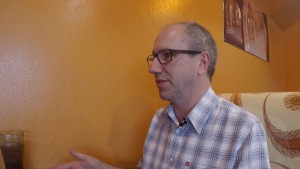With the announcement of Resolve 14 today at NAB 2017, it seems that Blackmagic Design have their sites clearly on Avid’s Media Composer: intentionally or not.
I’ve long wondered what apps would be most threatened by Blackmagic’s rapid development of Resolve.
Adobe’s suite of tools and dynamic link makes a powerful argument for that platform. Although Resolve has improved integration with Fusion, it’s not yet at the level of Dynamic Link. Not that Dynamic Link is the most robust of Adobe tech. Despite being free, it’s hard to see Resolve directly threatening Premiere Pro, After Effects et. al.
Apple’s Final Cut Pro X/Motion combination features a new look at the editing interface – probably the reason it’s the most used professional NLE now – Â and those who use it, love the Magnetic Timeline. The most common response to today’s Resolve announcements was “but it’s track based.” Â Once you’re a fan of the Magnetic Timeline it’s hard to go back.
There are other players like Media 100, Edius and Vegas that will definitely be threatened by Resolve Free or the full version for just $299, but the one company that – mid term – is most threatened is Avid.
Resolve has already replaced Avid’s excellent (but left to die) Symphony grading and with major audio improvements – integrating their Fairlight purchase – and shared project upgrades directly threaten core focuses of Media Composer and ProTools.
Fortunate or not, while these are key parts of Avid’s current software lineup, there are a small percentage of Avid’s overall business.
Very interesting to see how the new features and pricing affect adoption, and who will be most threatened. If you’re looking for a modern, track-based NLE with good audio, great color grading, and excellent DIT tools and collaborative workflows gaining maturity, Resolve deserves a version 14 look.
Alex Gollner (aka Alex4D) has seen the same issues:Â Blackmagic Design has sights set on Avid with DaVinci Resolve 14
